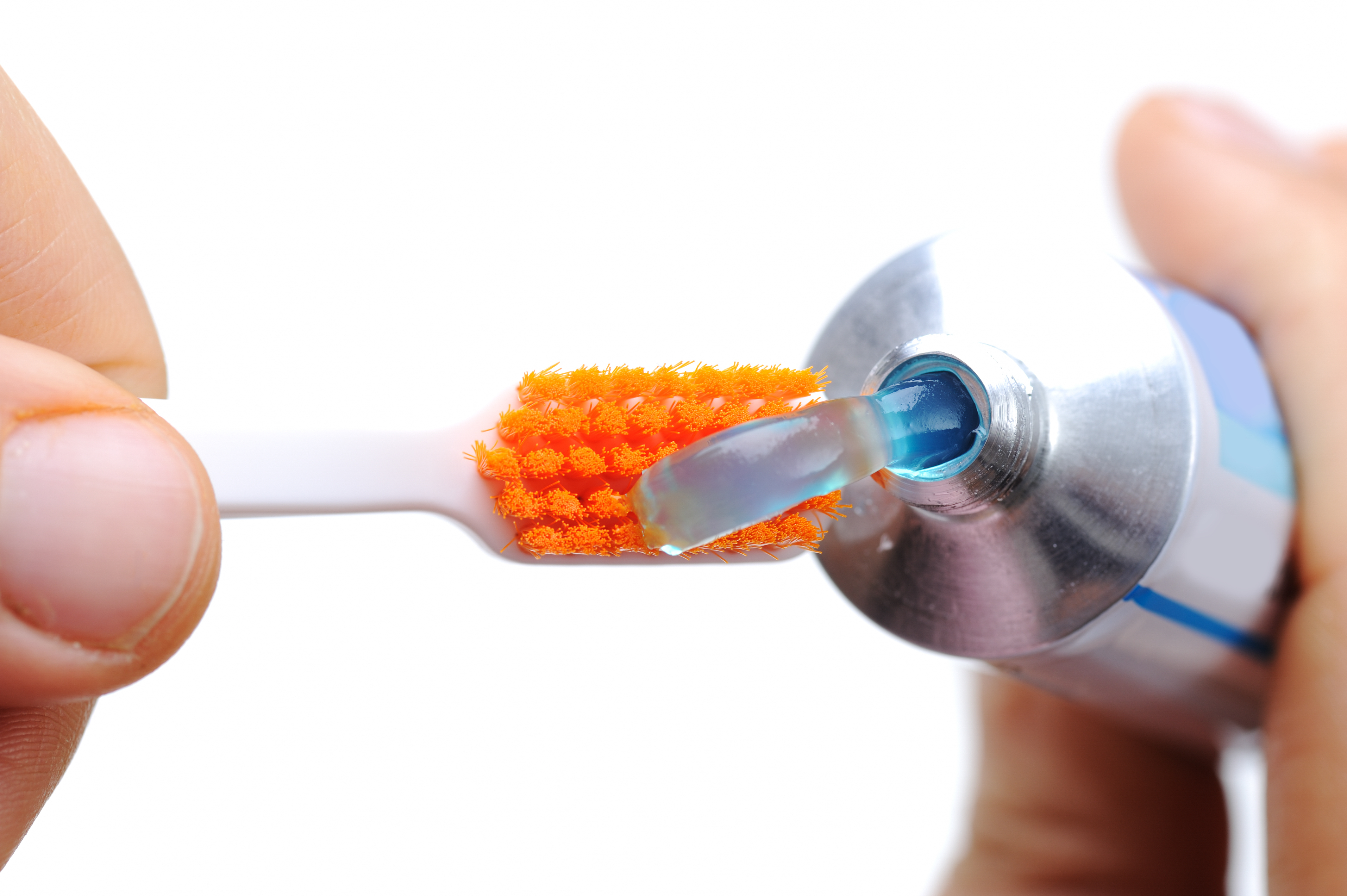About Teeth Whitening
So you are looking in the mirror this morning and what did you see?? Was it white bright beautiful teeth, or like the best part of the population were they looking a little dull? Like most things in life teeth gradually fade to yellow in color. If you are an avid coffee, tea or red wine drinker then this will accelerate the process and may also stain your teeth.
It seems that almost every cosmetic company has tried to monopolize this industry with everything from whitening toothpaste to whitening strips. But there are only really two main options. Take-home whitening systems using trays and whitening gel or in-office, for immediate whitening results using a light activated gel to brighten teeth.
Take Home whitening kits
Take-home whitening has become wildly popular in recent times due to its flexibility and lower cost to in-house teeth whitening. The trade off is that it takes slightly longer to achieve the desired results (anywhere from 3 days to 2 weeks)
This is accomplished by using a custom-made tray that is then layered with a prescription whitening gel 30mins to several hours at a time (dependent on how sensitive your teeth are).
Your dentist will make an appointment with you to take a custom impression which will then be used as a mold to make custom trays.
Once the whitening trays are ready you will have another appointment with your dentist where he will test them for a proper fit. Also the dentist will show the patient how to use the trays in conjunction with the whitening gel.
The whitening trays are quite comfortable to wear and can easily be placed in before bedtime and taken out in the morning.
Usually you will also be given a tooth mouse which you apply after using the trays to help alleviate sensitive teeth that some people get when using the gels.
In-Office Whitening
There are several in-office whitening systems on the market. The correct procedure is simple and painless. It usually begins with a short preparation to isolate your lips and gums. The clinician then applies the proprietary whitening gel, this is activated by a specially designed light. Teeth typically become at least six to ten shades whiter, sometimes more. A five-minute fluoride treatment competes the procedure. You’ll be amazed with the results. In most cases, teeth get even whiter the first few days after the procedure. If you’re interested, contact The Whitening Station to know more and get results.
Who is eligible for tooth whitening?
Well that is just a matter of preference really, anyone who would like to whiten their teeth by up to ten shades. It is very common among wedding parties for nice white bright wedding photos. But it really does appeal to everyone.
The future of 3D cinema and 3D video advertising content

This year so far has seen a vast slowing down of hollywood blockbusters in 3D format. Some time ago, every film that was on a large scale budget was automatically pressured into being a 3D project by hollywood bosses as the media was so popular with cinema audiences. 3D by nature is much more exciting as an audience member who is attracted by the sensationalist aspect of film, as it makes it easier to be engulfed by the world they are shown on screen as they feel much closer to the action than 2D (due to this 3D method playing tricks on the brain). High scale action films, comedies and gory horrors seemed to work particularly well in 3D as they aimed to achieve striking one particular chord within the viewer to get the reaction they desired, such as being horrified or laughing or in ore at the amazing special effects used. Films that were ambitious with what they wanted to get from their audience emotionally were often not made into 3D as the technology would not bring anything to the film. As these films are commonly after not just one emotion but several. It is also very costly to make a film in 3D rather than 2D due to the camera, rigging, visual effects, editing, processing and expertise that is additionally needed. It is therefore no surprise that as there has been a slight decline in audiences automatically seeing a film just because it is in 3D, hollywood in response has dramatically cut down on the 3D production of films as profit margins have become too small.
However something that is still very popular with cinema audiences is remastering their old favourites into 3D. Some recent examples have included Star Wars, The Lion King and Titanic. This trend suggests the public still has a strong fascination with films in 3D… however only if they have seen and enjoyed the 2D version. They are wanting to experience it again from a different immersive viewpoint.
Occasionally advertising videos are made in 3D but this is for a gimmick effect usually so they can attract more people over to their stall at exhibitions. However with complete 3D computers become evermore popular and with this recent trend occurring with revamping old movies in 3D it is quite possible that there will be a demand in visitors to your website to have a choice to view your corporate film in 2D or 3D. Negatives of this would be having the cost of having to convert your 2D film into 3D however the benefits would be that your visitors are staying on your site for longer and therefore learning more about your business and brand as well as a 3D advertisement establishing a connection with your viewer that cannot be attained by a 2D version due to the nature of the technology.
Aromatherapy – 100% Natural Treatment for Minor skin irritations
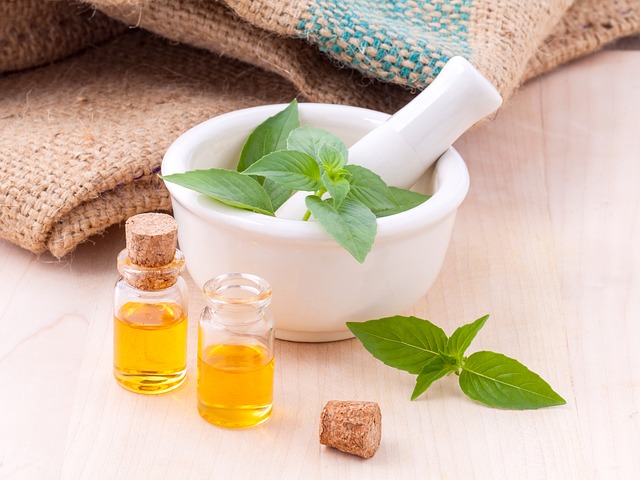
Essential oils and aromatic plants have been used to treat minor ailments since ancient times. Using natural, pure essential oils is an easy and inexpensive way to treat various maladies without fear of adverse side-effects and is therefore ideal for children and adults alike, as well as people with sensitive skin.
Why use pure essential oils?
For as long as humans have walked the earth, natural ingredients have been key for maintaining good health inside and out. For far too long, we have been conditioned to reach for a pill, a cream or a tube of chemicals to help us and the pharmaceutical companies revel at our reliance on their products; but what if we can treat our everyday ailments the natural way? Try a blend of cedarwood and eucalyptus oils as a natural decongestant for a cold or a few drops of geranium and lavender to moisturise dry skin. This certainly seems a lot more appealing, but more importantly, they really work because of their nutritional properties.
How do you know when essential oils are pure?
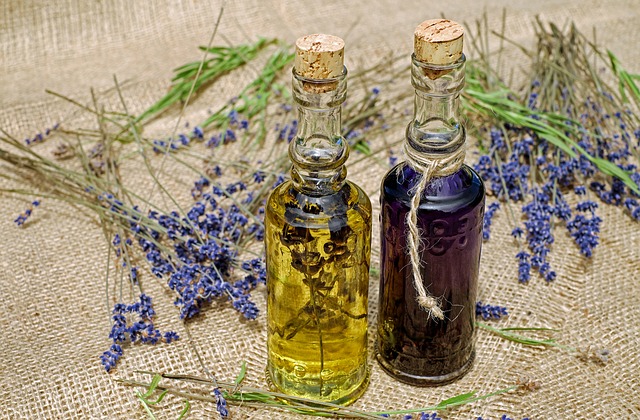
There are numerous products on the market, but they are not all suitable for medicinal purposes. It is important to read the label carefully as some are synthetic and contain no natural ingredients whatsoever; others are heavily diluted and only contain a small percentage of the original ingredient offering very little therapeutic value. To ensure that you are getting the very best whether it be for topical therapeutic applications or to use in a burner to refresh your home, here are what you should look for on the label:
- A good essential oil will always be in a dark glass bottle. Light can deteriorate the quality of the oil, rendering its efficacy inert. A dark bottle ensures the longevity of the nutrients in the oils.
- The bottle should have an inbuilt dropper at the top to accurately control the amount of oil-drops you are pouring
- It should indicate that it is a ‘pure essential oil’ – not a fragrance eg: Pure Bergamot Oil not Bergamot scented/fragranced oil. It must be the real deal.
- Often it will have the original plant name of the oil – eg: Bergamot Oil – Citrus aurantium fruit peel oil
- Check the concentration of the oil in the bottle eg: 100% Bergamot oil w/w – weight for weight or ‘v/v’ – volume for volume
- There are some oils which are too unstable or potent to use on their own and will be mixed in a base carrier oil, usually a nut oil such as almond oil or jojoba oil. In this instance, the label should indicate this very specifically – eg: Chamomile in Jojoba Oil – Chamomile Oil English 26mg/ml and Simmondsia Chinensis Seed Oil 839mg/ml
- Blended essential oils are good as well, as long as the label states that it is 100% pure
- The nose knows – for example if the oil claims to be 100% orange oil but smells nothing like it, then it is best to avoid it, as the oil may have become rancid or is of poor quality
Various ways of using essential oils
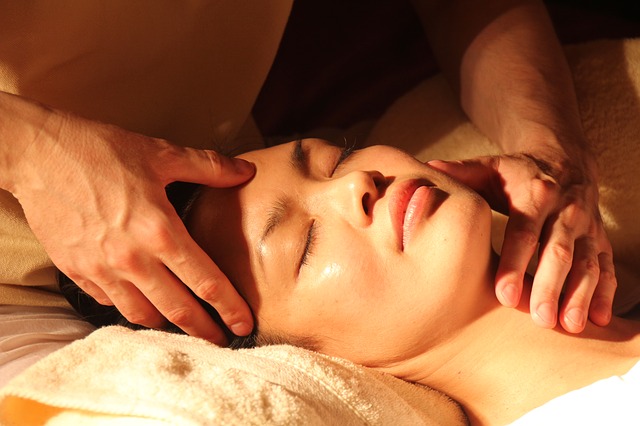
- Medicinal purposes – selecting particular oils to achieve the results you need eg: tea tree for disinfecting wounds or for treating pimples/acne
- Burning in oil burner – adding a few drops of lemon oil, orange oil and bergamot oil will cleanse the air of stagnant smells and refresh the space
- Massage – Massage is an effective method of stimulating blood circulation and aligning muscles. Adding essential oils to a good carrier oil such as jojoba oil will further enhance relaxation and eases away stress
- Steam bath/inhaler – for respiratory troubles, put a few drops of key essential oils, as noted below, in a warm bath or bowl of hot water. The steam will clear the sinuses and relieve catarrh
- Mood enhancer – (Ref1) Research shows that our emotions are strongly related to our olfactory sense. Our moods can be altered simply by introducing a smell which is conducive to the feelings we want to experience eg: citrus smells are uplifting and happy – like the smell of cut oranges or fresh lemons, woody smells such as cedar or cinnamon evoke a feeling of warmth and comfort. Floral smells such as rose, palmarosa and ylang ylang suggest feelings of love and freedom.
Create your ideal environment with smells you love such as grapefruit in the kitchen, rose and lavender in the bedroom, cypress in the office/study, orange and sandalwood in the laundry – try your own combinations.
3 Must-Eat Superfoods

What exactly is a superfood? Superfoods are whole foods that have extremely high nutritional values and health benefits for a human body. Doctors, nutritionists and scientists around the world agree that eating superfoods not only prevents certain diseases, but also boosts your immune system, lowers your cholesterol, fights stress and even helps you to lose weight.
You probably heard many times about the health benefits and nutritional values of certain foods like tomatoes, blueberries, broccoli or spinach. These vegetables are of course great, but there are many other superfoods that have been used for centuries in different parts of the world for better health and longevity. The good news is these superfoods have already made their way to your local supermarket. You don’t have to travel far to find them. You just need to know what they are. I have listed three superfoods that you will easily find in your local supermarket.
Goji Berries
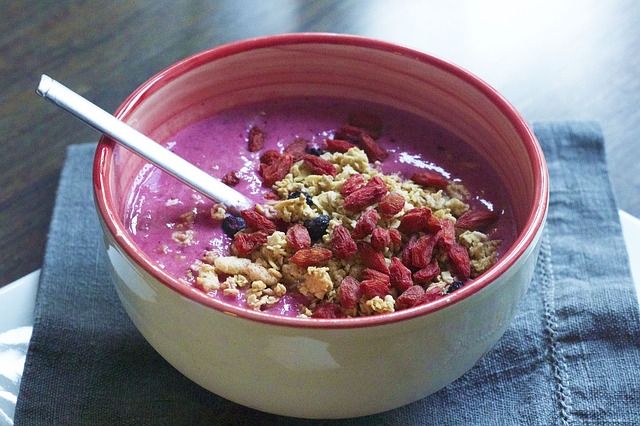
In the United States, high nutritional values of blueberries, raspberries, cranberries and blackberries are well known. But there is another very powerful antioxidant in the berry family. It is called goji berry (sometimes called wolfberries). Goji berries in the US are usually found dried. They look like red raisins and has somewhat of a sweet and sour taste. They grow on an evergreen shrub in regions of China, India, Mongolia and Tibet. It is a newer kind of food/snack in the United States, but goji berries have been used for over 5,000 years by herbalists in different countries. Goji berries are especially known to keep the liver healthy. It is also known to boost immune functions, improve circulation, help eyesight and reduce inflammation. Like most fruits, it has essential vitamins and minerals in them too.
For the last couple of years, goji berries have been getting much attention as one of the anti-aging wonders. And it really is one of the best superfoods that you can eat, but remember, this is true only if you are eating the purest form of it. The market is overloaded with various marketing campaigns – goji berry chocolates and energy bars, goji berry teas and drinks, goji berry this and that. If you are buying these products to get the health benefit of goji berry, think again. It is like eating spinach on a fatty hamburger. Spinach itself is good, but it is still a fatty hamburger. This principle applies to any other superfoods. You need to eat wholesome foods and its purest form to absorb its benefits.
It is believed that pure juice from fresh goji berry helps to keep your liver healthy. The juice from the goji berry is also used for various medicines to treat various illnesses. It is popular to consume goji berry in your tea. Just drop a couple of dried berries in your cup of tea. Also, you can use them to garnish your salad or in stir-fries. Because goji berries are very delicate on the plant, they are usually not picked by hand; they are gently shaken from the vine. Then, they are set out under the sun to dry. They are not processed. This is the type of goji berry you should eat to absorb the health benefits. Avoid the processed products that claim to have goji berries in them. If you can’t find them fresh, try either frozen or dried goji berries.
Mangosteen

This sweet tropical fruit is native to Indonesia, Malaysia, Thailand, Singapore and Philippines. It has a thick dark purple rind that you cut open, inside is white creamy soft edible center that is full of vitamins and antioxidants. It is very sweet. Mangosteen requires a warm, very humid equatorial climate to grow. In the United States, the juice of mangosteen is becoming widely available. It is also available in tea form in your local supermarkets, if you can’t find the fruit.
Ointments made from mangosteen rind has been used in the medicine for skin infections, skin disorders, wounds and allergies throughout Southern Asia. The studies show that the primary active component of mangosteen is called xanthones. This powerful component is shown to have many benefits for a human body including anti-inflammatory, anti-viral and anti-bacterial abilities. It is also shown to support immune system, fight stress and even uplift your mood.
Many studies said that the rind has nutritional values and contains cancer-fighting chemicals. Some studies even suggest eating the rind raw to absorb the cancer fighting benefits. I do not recommend eating the rind. The rind of the mangosteen is designed to be carefully cleaned and used in creams, ointments and sometimes capsules; it is not meant to be eaten raw, because the thick rind contains various unpleasant substances that is intended to discourage insects from eating the fruit in the center.
Whether you are trying mangosteen for health reasons or for just pure enjoyment, it is one fruit that is worth trying. I like it because of its sweet taste. All the other benefits are just a plus. If you can’t find the real fruit, try frozen, dried or in a tea form.
Mustard Greens
Mustard greens are related to kale, cabbage, collard greens and arugula family. It is a leafy green vegetable that is commonly used in Chinese, Japanese and Indian cuisines. This vegetable has been used in culinary preparation as far as 5,000 years back, and it is full of vitamin A, C and E and high in antioxidants. Many studies have shown that mustard greens, like many other greens, have anticancer effects. It tastes great, too. When cooked, it tastes a lot like spinach, but with more body. It is available year-round, but freshest at its peak from February until April.

The mustard plant that gives us the leaves also produces seeds. Mustard seeds are used for medicinal purposes too. It is also an important spice for many regional Asian cuisines. The seed is believed to have anti-inflammatory benefits. Mustard oil (made from mustard seeds) are used to preserve food. It is also used for body massages and believed to protect your skin and keep the skin healthy and moist.
Mustard greens are used in many vegetarian dishes, stir-fries, soups and curries. It also makes a wonderful side dish or an appetizer. To prepare mustard greens, just wash them and cook them in the olive oil with a little bit of fresh garlic on a medium heat. Then, add just a few drops of dark sesame oil. This is a quick, easy and a healthy side dish to any meal.
In the US, many food items have been altered to contain ingredients that our bodies don’t need. This causes many problems for our bodies: obesity, heart disease, high blood pressure just to name a few. This is simply because our bodies don’t need those chemically produced ingredients. So, on your next shopping trip, try one of these three superfoods: goji berry, mangosteen or mustard greens. Also, experiment with different health foods, and find the ones you like. There are many healthy foods that are absolutely delicious!!! When it comes to your health and body, always eat the purest and freshest foods that you can find. Cheers to your health!
Achieving Complete Body Relaxation
Progressive Relaxation for the Mind and Body
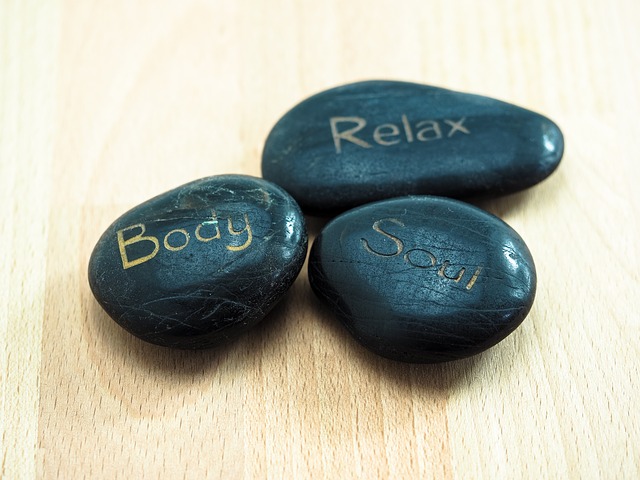
There are many methods and techniques to induce full body relaxation. From the soothing touch of therapeutic massage to sitting in tranquil mindfulness meditation, deep relaxation is beneficial to body and soul. There’s no getting around it, life is busy. The busier it is, the harder it gets to find peaceful relaxing moments in the day. However, it’s important to carve some time out of the 24 hours in the day to search out that which makes us serene and calm.
Potential Benefits of Whole Body Relaxation
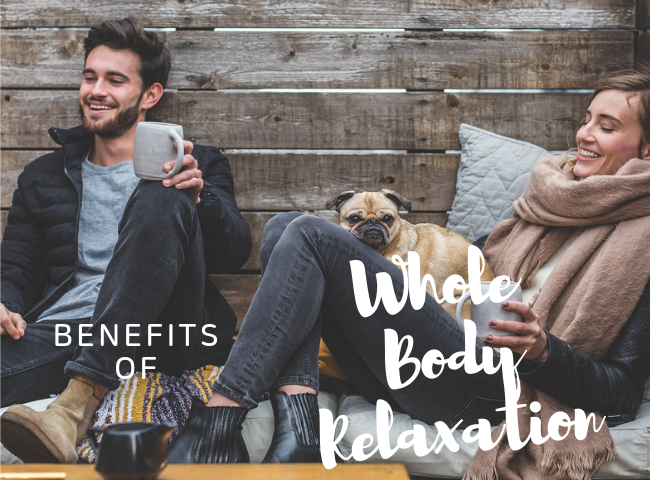
Benefits of deep relaxation may include more restful sleep, relief from stress, anxiety or depression, a stronger ability to focus, higher creativity and productivity levels, lowering of blood pressure and overall improved general health. Finding time to relax is as important to the body and mind as proper diet and exercise.
A Full Body Relaxation Exercise
This relaxation technique can be adapted to suit the person using it. It can be utilized in a group setting where others can benefit as well. Twenty to 30 minutes per day is an adequate amount of time to induce the relaxation response when first learning the technique.

- At a time where you won’t be disturbed, lie on a comfortable flat surface in “zero gravity” position. This position is semi-reclining with cushions under the lower legs to elevate them to be level or slightly higher than the heart. This positioning is extremely comfortable and takes pressure off all major points of the body while still providing adequate circulation.
- Turn on soothing music without lyrics. This may need to be done before lying down if a remote control or portable audio system is not being used. Typical audio for deep relaxation is massage music or that designed for meditation or visualization techniques. Some audio includes brainwave technology to induce the “alpha state” in the brain which is deeply relaxing.
- Cover up with a blanket if necessary as body temperature drops as the body relaxes more deeply.
- Begin to breathe, inhaling to the count of four, holding to the count of seven, and exhaling to the count of eight. Continue this for approximately six cycles, then return to your natural rhythm.
- Begin progressive muscle relaxation with the feet, working upwards through the body. Pay attention to any areas of tension or pain along the way and visualize sending breath into the areas to relax and soothe.
- As any thoughts wander in to your mind, simply allow them to come and go. Resume focus on your breath and inducing complete body relaxation by allowing muscles to release all tension they may be holding.
The relaxation exercise above is easy to do but difficult to master. It is important to carve out time during the day to be able to do it without disturbance from phone calls, children, pets or time constraints. Many people have varying degrees of difficulty with controlling unwanted thoughts. Knowing that it’s normal and natural to have thoughts come and go may help with the ability to do the exercise effectively.
A Body Relaxation Consideration
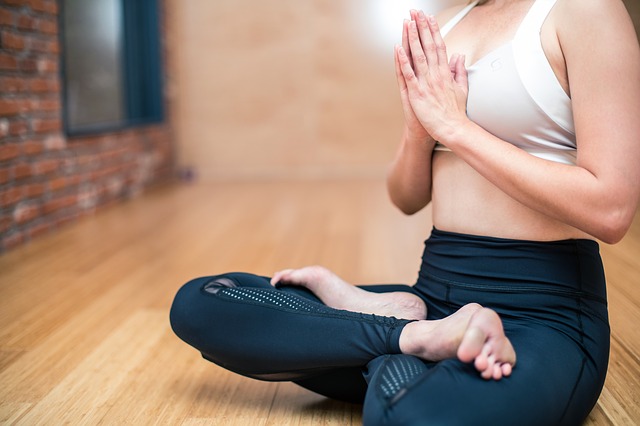
If it seems impossible to induce deep relaxation on your own, consider using pre-recorded guided meditation, guided visualization, or hypnosis audios. Sometimes, the ability to hear someone else’s voice may be more effective in allowing deeper focus and ultimately, complete body relaxation.
Eye Lens: Anatomy & Accommodation
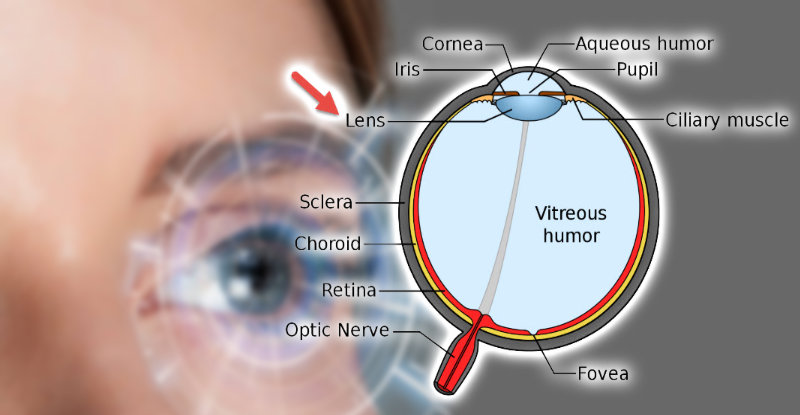
The lens of the eye is a transparent crystalline structure located directly behind the pupil. It has 9-10 mm diameter. The eye lens is like a crystal and consists of water and proteins. It is normally transparent to allow light rays to pass to the retina. It is also called the crystalline lens. The image below shows the lens of a calf eye removed and sitting on the palm of a gloved hand. The lens of the human eye looks the same as this lens.
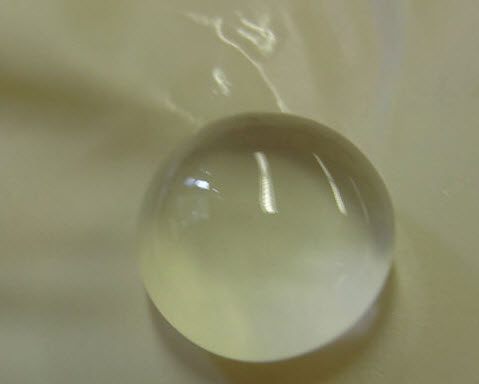
Light rays entering from the pupil pass directly to the lens. If you have contacts, it would penetrate even the famous brand of colored lenses. The image below shows the lens location directly behind the pupil. The lens in the image is of a person has a cataract, and it appears white in color. In normal people, the lens is transparent. And no, that is not a result of buying lenses at a cheaper price!
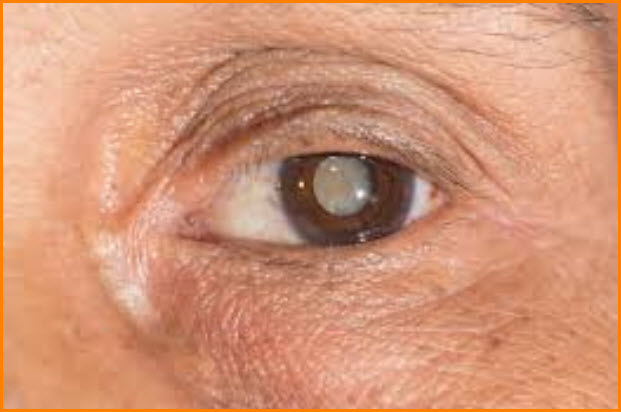
The main lens function is to refract “bend” light rays and focus them in the eye. It shares this mission along with the cornea. The lens of the eye represents about one-third of the whole refractive power of the eye.
Normally, the lens has fixed power to focus all parallel light rays (coming from 6 meters distance or further). All light rays coming from 6 meters or further need the same power to refract and focus them.
Light rays coming from a distance less than 6 M enters the eye as diverged light rays. These light rays (coming from less than 6 meters) need different power for every distance they come from. Light rays coming from 4 M, for example, need more focusing power than those coming from 5 M. The lens has unique ability to enable it to adjust and tune its power to achieve this mission. This ability is called “accommodation.”
Accommodation
Accommodation is the adjustable change of lens power in order to focus diverge light rays (entering the eye from less than 6 meters) in the retina.
The lens shape is changed to adjust the power of the lens. There are suspensory ligaments of the lens (also called ciliary zonules) attach the eye lens to the ciliary body (which contains the ciliary muscle). They extended (like ropes) from the ciliary body and attached to the equator of the eye lens. These hold the lens in position and enable the ciliary muscle to act on it. The image below illustrates how the lens is attached to the ciliary body (which contains the ciliary muscle).
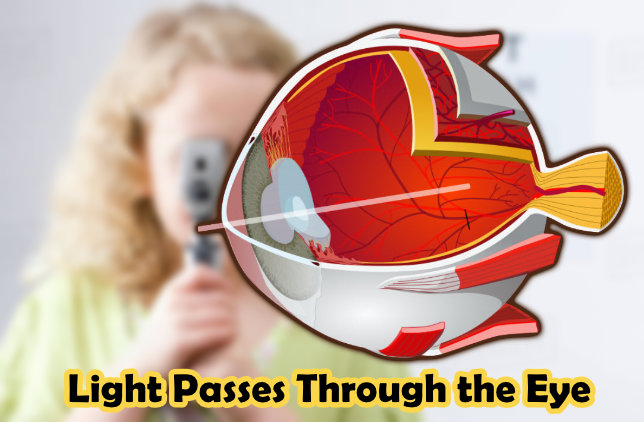
When a light ray entering the eye from a less 6-meter distance or further, the ciliary muscle is relaxed, and the zonules are in a stretched configuration exerting tension on the lens holding it in the unaccommodated state, such that the image lies on the retina.
When a light ray entering the eye from less than 6-meter distance, the eye needs more refractive power to focus them on the retina. This happens by as the following: the ciliary muscle contracts, the ciliary zonules loosen, and the lens thickens and become more curved, resulting in a rounder shape and thus high refractive power.
This contraction of the ciliary muscles increases the lens power by the appropriate required amount. The more the contraction, the more increase in the refractive power of the lens.
Cinnamon Lowers Fats & Blood Sugar Naturally
Type two diabetics may have no shortage of insulin, but their muscle, brain, and liver cells sometimes develop a resistance to it, making control of blood sugar difficult. Type two diabetes also doubles the risk of cardiovascular disease when compared to non-diabetics. Cinnamon may play a role in reducing the incidence and severity of these effects.
Complex Processes Regulate Lipids and Glucose
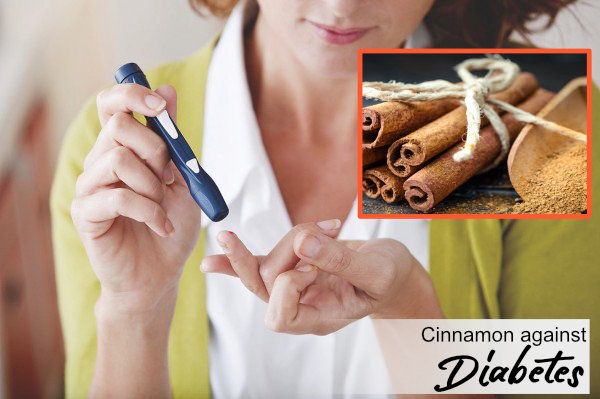 Kinase activity is the physiological key to the mechanisms that signals cells to accept insulin and lower blood sugar. Kinase is a protein enzyme that also plays a role in metabolizing fats. A University of Iowa study, published in the Journal of the American College of Nutrition, isolated a methylhydroxychalcone polymer (MHCP) from cinnamon and found it can enter cells and interact with kinase in a way that mimics insulin (1). The Iowa scientists thought at first that cinnamon’s effect might be due to the mineral chromium, a known aid for blood glucose control. They found, however, that the kitchen spice actually has very low levels of chromium.
Kinase activity is the physiological key to the mechanisms that signals cells to accept insulin and lower blood sugar. Kinase is a protein enzyme that also plays a role in metabolizing fats. A University of Iowa study, published in the Journal of the American College of Nutrition, isolated a methylhydroxychalcone polymer (MHCP) from cinnamon and found it can enter cells and interact with kinase in a way that mimics insulin (1). The Iowa scientists thought at first that cinnamon’s effect might be due to the mineral chromium, a known aid for blood glucose control. They found, however, that the kitchen spice actually has very low levels of chromium.
Maryland Researchers Get Results
In Maryland, in a randomized, controlled study on humans, 60 diabetic patients took either one to three capsules of cinnamon daily or a placebo for 40 days. Blood sugar dropped 18 to 29% in those subjects who took cinnamon, but there was more good news. Triglycerides, a type of fat in the bloodstream that ends up stored in fat cells, fell from 23 to 30%. Triglycerides are associated with obesity and untreated diabetes.
Finally, the subjects who received cinnamon also saw their LDL cholesterol drop from 7 to 27%. LDL stands for low-density lipoproteins, those tiny packages that transport fatty substances through the bloodstream into arteries and deposit it there, while HDL, or high-density lipoproteins, transport cholesterol away from arteries and back to the liver to be broken down. Cinnamon did not change HDL cholesterol. Its impact on LDL cholesterol improved the ratio of HDL to LDL; something doctors think lowers the risk of heart disease and stroke. The results of the Maryland study were published in Diabetes Care (2), the magazine of the American Diabetes Association.
There Are Different Types and Ways to Use Cinnamon
Researchers tried different varieties and commercial brands of cinnamon with good results. C. aromaticum, a cinnamon known as cassia, Chines, Saigon, or Korintje cinnamon, is preferred in the United States. C. verum, or Zeylanicum, Ceylon, or “true cinnamon” has a more delicate flavor and is popular in England, Europe, and Mexico. Oils in cinnamon may be toxic at high doses, but the beneficial ingredient is water-soluble, making cinnamon tea a safe choice. Researchers caution diabetics that more is not better; use sensible amounts and monitor blood glucose frequently to avoid episodes of low blood sugar that could be dangerous (3).
Cinnamon is not a cure for diabetes. The best strategy is careful diet and exercise as directed by a healthcare professional. However, with regular use cinnamon may reduce the need for medication and help prevent cardiovascular complications.
References
- Karall J. Jarvill-Taylor, Ph.D., et al., A Hydroxychalcone Derived from Cinnamon Functions as a Mimetic for Insulin in 3T3-L1 Adipocytes, Journal of the American College of Nutrition, 20(4), 2001
- Alam Khan, et al., Cinnamon Improves Glucose and Lipids of People with Type 2 Diabetes, Diabetes Care, 26(12), December 2003
- David Mendoza, Cinnamon, December 12, 2003
Keeping the Side Effects of Contact Lenses at Bay
Because contact lenses are worn directly on the eye, they can potentially cause side effects. The lenses, roughly the same diameter as a person’s iris, float on a layer of tears right in front of the cornea. Contacts are not “one size fits all,” and in fact must be carefully prescribed to match not only the person’s prescription but his eye size and shape. When they are prescribed and fitted properly, contact lenses provide great vision, including peripheral vision, and they are hardly noticeable.
Contact lens designs have taken advantage of new materials technology and are more comfortable to wear than ever before. Lenses are often coated or impregnated with moisturizing agents that keep the eye from drying out. Ciba Vision is a brand that uses a substance called hydrogel, a substance designed to keep the eye moist all day. Wearers report that they are extremely comfortable. But Ciba Vision isn’t the only brand of contact lenses. Acuvue, made by Johnson & Johnson, is one of the top-selling brands of contact lenses in the world.
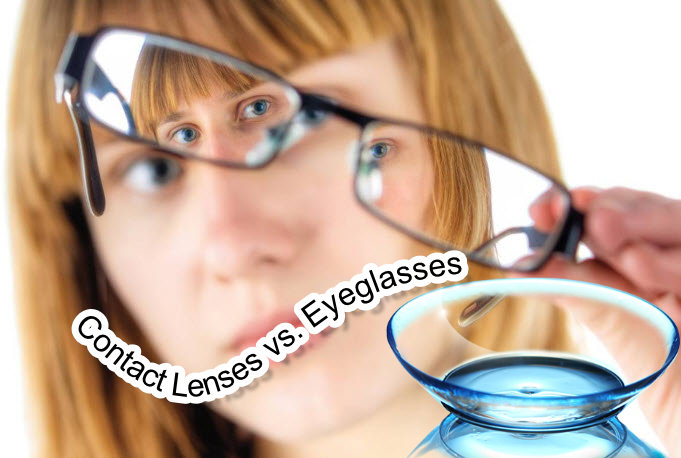 Soft lenses
Soft lenses
A few decades ago, the only choices in contact lenses were “hard lenses” or “soft lenses.” The vast majority of people who need vision correction can wear soft contact lenses, which are the ones most often seen in advertisements. Contact lenses today are assumed to be soft lenses unless otherwise specified. These can correct nearsightedness, farsightedness, presbyopia (problems with close vision that often develops as people get older), and astigmatism. People who have very mild astigmatism can often rely on the shape of the lens itself to gently push the cornea into a more regular shape, mainly correcting mild astigmatism without having been specifically prescribed with astigmatism correction.
Though the overwhelming majority of contact lenses are soft lenses, there are still some types of hard contacts available. They are made of a stiff plastic called polymethyl methacrylate, or PMMA. While they can correct vision problems that may not be manageable with soft contacts, they are the least comfortable contact lenses. There are also rigid gas-permeable lenses, which are more comfortable than PMMA lenses and can be worn overnight for up to one week.
When it comes to soft contact lenses, there are several varieties, including daily wear, disposable, and one-day lenses. Daily wear lenses must be removed at night for cleaning and storage. They’re then put back in the next morning. While they may last for a year and are economical, they can be uncomfortable to wear for long periods of time or in dry, windy weather.
Enzymatic cleaning
With daily wear lenses, weekly enzymatic cleaning is often necessary. This is an extra step in the cleaning process that cleans protein deposits and other substances that can build up on lenses. When daily wear contacts are handled haphazardly, or when cleaning and storage instructions are not followed faithfully, contact lens side effects can include pink eye and even ulceration of the cornea.
Disposable contact lenses may be designed only to be worn during waking hours or to be worn overnight. They are used for a period of one day to one month and then discarded. Lenses designed to be worn for longer than a day have to be cleaned and stored when they are taken out. One-day disposable contact lenses are considered the safest contact lenses available because the only handling they require is that of putting them in and taking them out.
Contact lens side effects are rarer with disposable lenses than with daily wear lenses but can include eye irritation, pink eye, and only very rarely corneal ulceration. They must be fitted and prescribed as carefully as daily wear lenses and must still be handled with clean hands.
Special effects contacts
Some contact lenses are not worn for vision correction at all, but for special effects or fashion. Colored contact lenses are made with varying degrees of tint to subtly or radically alter eye color. The lighter the wearer’s natural eye color, the less tint that is required to change eye color. People with dark eyes must use the so-called opaque contact lenses to change the color of their eyes. Though the tiny dots that make up the color are opaque, they aren’t one solid sheet of color. The circle in the center of the lenses is clear and fits over the wearer’s pupil.
With opaque contact lenses, the circular area over the pupil is of a fixed diameter, and human corneas open wider or get smaller depending on the amount of ambient light available. In conditions of low light, the pupil opens widely, and the opaque portion of the lens may partly cover the outer edges of the pupil, partly obstructing vision. Wearers usually don’t find this to be much of a problem. Another contact lens side effect with opaque colored contact lenses is that they may shift slightly when the wearer blinks. This shifting may cause part of the opaque portion of the lens to block part of the pupil for a brief instant after blinking until the lens shifts back into place. Some of the newer designs claim to stay in place better to combat this problem.
Opaque contact lenses can be made with or without vision correction so that people who have perfect vision can still take advantage of the ability to change eye colors. These lenses, called Plano lenses, still require an eye doctor’s prescription, because in the U.S. all contact lenses are part of the purview of the Food and Drug Administration, which has declared that a prescription is necessary when ordering contact lenses online.
Another just for fun type of contact lens is the special effect lens. These are available from numerous online retailers and are very popular for costume parties, Halloween, and going to clubs in some parts of the world. The special effects consist of outrageous colors, swirls, patterns, cat-eye pupils, starburst patterns, and even blackout and whiteout effects. The blackout and whiteout effects are made with what is called scleral lenses. They cover more than just the iris of the eye; they cover the entire visible part of the eye. They are only meant to be worn on special occasions for short periods of time. Scleral lenses had the contact lens side effects of irritation but extended to the entire visible part of the eye rather than just the iris and the cornea.
Special effect contact lenses are generally made with no vision correction, though some companies will custom make special effects lenses with prescriptions for an extra charge and with the extra wait time.
Proper cleaning and handling of contacts
While contact lenses are manufactured and packaged under very strict conditions, the fact that they are inserted directly onto the eye opens up the opportunity for contact lens side effects. A speck of dust or a truant eyelash trapped under a contact lens can feel as irritating as a grain of sand. Proper cleaning and handling of lenses will minimize the possibility of a foreign object making it into the eye.
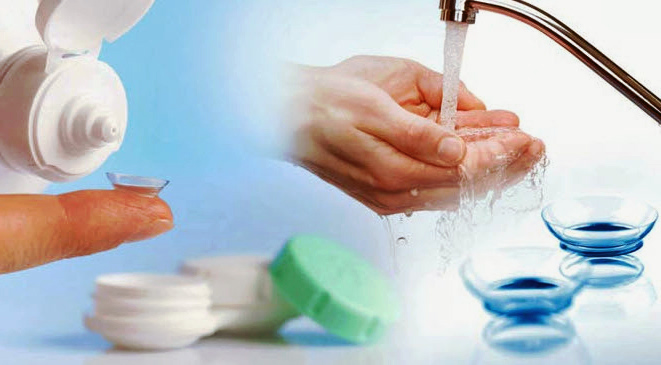 Human error is almost always the cause of contact lens side effects, but there are people whose eyes simply cannot adjust to having a foreign object on them, and there are people with allergies to the materials the lenses are made from or the cleaning solutions that must be used with all contact lenses except for daily disposables.
Human error is almost always the cause of contact lens side effects, but there are people whose eyes simply cannot adjust to having a foreign object on them, and there are people with allergies to the materials the lenses are made from or the cleaning solutions that must be used with all contact lenses except for daily disposables.
In 2006, Bausch & Lomb, one of the largest, oldest, and most respected makers of contact lenses recalled one of its contact lens cleaning solutions, Renu, when it was associated with an eye fungus called Fusarium keratitis. Of the patients with the infection, most wore soft contact lenses and reported using Renu solution on them. However, a few of the patients reported that they did not use Renu, and several patients said they wore lenses overnight, which is associated with greater risk of infection regardless of lenses or solutions. But contact lens side effects like the outbreak of Fusarium keratitis are extremely rare.
Bifocal and monovision contacts
Perhaps the main reason people wear contact lenses is that they feel like they look better in contacts than they do with glasses. They are also convenient and do a great job of correcting vision. Contact lenses can now correct vision problems that required glasses to correct in the past. In addition to nearsightedness, farsightedness, and presbyopia, contact lenses can be made to correct for astigmatism and can even be made into bifocal contact lenses for people who hate the idea of wearing bifocals. Another contact lens technique that can take the place of bifocals is what is called monovision. With monovision, one eye is corrected for distance vision, and the other eye is corrected for close vision. After the patient’s eyes adjust to the new vision correction, they report not noticing that the correction is different for each eye and that the brain compensates for it, allowing clear distance and near vision.
The best candidates for wearing contact lenses include people who need correction all the time. People who wear glasses only part-time don’t always adjust to wearing contacts for extended periods. Potential contact lens wearers must be willing to commit to the time and effort of handling the lenses properly every time they are inserted, removed, and cleaned. People who play sports may find contact lenses superior due to the better peripheral vision compared to eyeglasses, and for reasons of safety.
People who should probably not wear contact lenses
People who should probably not wear contact lenses include those who are unwilling to commit to handling and storing them properly. People who have trouble using their hands, in cases of arthritis or other conditions may find that contact lenses are not worth the effort. People with uncontrolled diabetes, asthma, and allergies may find it difficult to adjust to contact lenses, as will people who have naturally dry eyes. Those with chronic infections of the cornea are far more prone to experiencing adverse contact lens side effects.
The fact is that millions of people worldwide wear contact lenses with no problems and no contact lens side effects. Anyone who is tired of wearing eyeglasses or who would like to see what they would look like with different colored lenses should consult their eye care professional about getting fitted for contacts.
Chamomile Tea to Prevent Diabetes Complications
Chamomile tea has been used down through the ages as a natural remedy for anxiety and insomnia. Can it help diabetics too?
 Chamomile tea has long been enjoyed for its health benefits. An infusion prepared from the leaves of this daisy-like plant has been used for ages to reduce anxiety and treat insomnia. Now, new studies show that drinking chamomile tea could also help to prevent diabetes complications in those with diabetes.
Chamomile tea has long been enjoyed for its health benefits. An infusion prepared from the leaves of this daisy-like plant has been used for ages to reduce anxiety and treat insomnia. Now, new studies show that drinking chamomile tea could also help to prevent diabetes complications in those with diabetes.
Type 2 Diabetes is one of the most common diseases in this country with seven percent of the population being affected, and some don’t even know it. This disease which causes persistently elevated blood sugar levels can damage almost every organ in the body including the heart, kidneys, retina, and nerves. Diet is one of the mainstays of treatment for diabetes, along with medications and insulin, but there may be a reason for diabetics to drink chamomile tea more often.
Health Benefits of Chamomile Tea: Does It Prevent the Complications of Diabetes?
In a study published in the Journal of Agricultural and Food Chemistry, researchers gave diabetic rats an extract from the chamomile plant along with their regular diet. A second group of rats received no chamomile. Not only did the rats that received the chamomile extract have lower blood sugars, but they had lower levels of an enzyme called aldose reductase which converts glucose to sorbitol.
This is important because when sorbitol builds up, it damages nerves, which can lead to diabetic neuropathy and diabetic retinopathy (damage to the retina of the eye). The health benefits of chamomile may go beyond stress and anxiety reduction – it could help to prevent the complications of diabetes too.
Other Health Benefits of Chamomile Tea
Drinking chamomile tea is not only a stress reliever, but it may have anti-bacterial effects as well. Some studies show it reduces the risk of gum disease, which is another condition diabetics often suffer from. There’s no shortage of claims for the health benefits of chamomile tea, but not all of them are proven in humans. Drinking chamomile tea should be approached with caution since some people experience allergic reactions to the plant, especially if they have an allergy to pollen.
Chamomile Tea to Prevent Diabetes Complications: The Bottom Line?
Drinking chamomile tea may not have the same benefits as taking a chamomile extract since an extract contains much higher concentrations of the active ingredient. Chances are a person would have to drink lots of chamomile tea to get the benefits seen in this study. Plus, this was a study in rats and can’t necessarily be extrapolated to humans. Although chamomile extract is currently sold by vitamin suppliers, it’s safest to await further research. Hopefully, further studies will show benefits for humans too.

